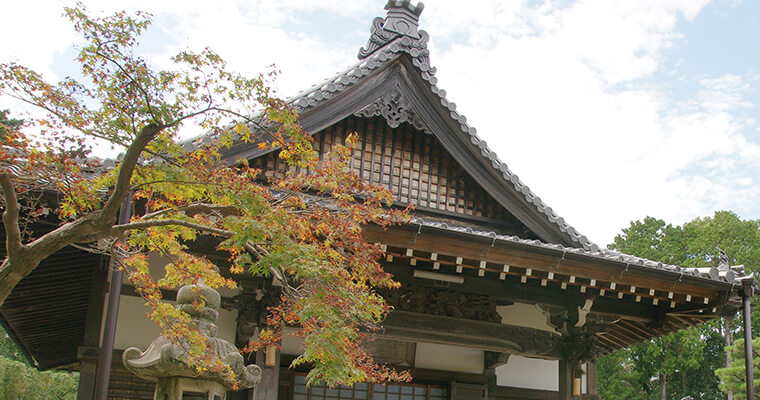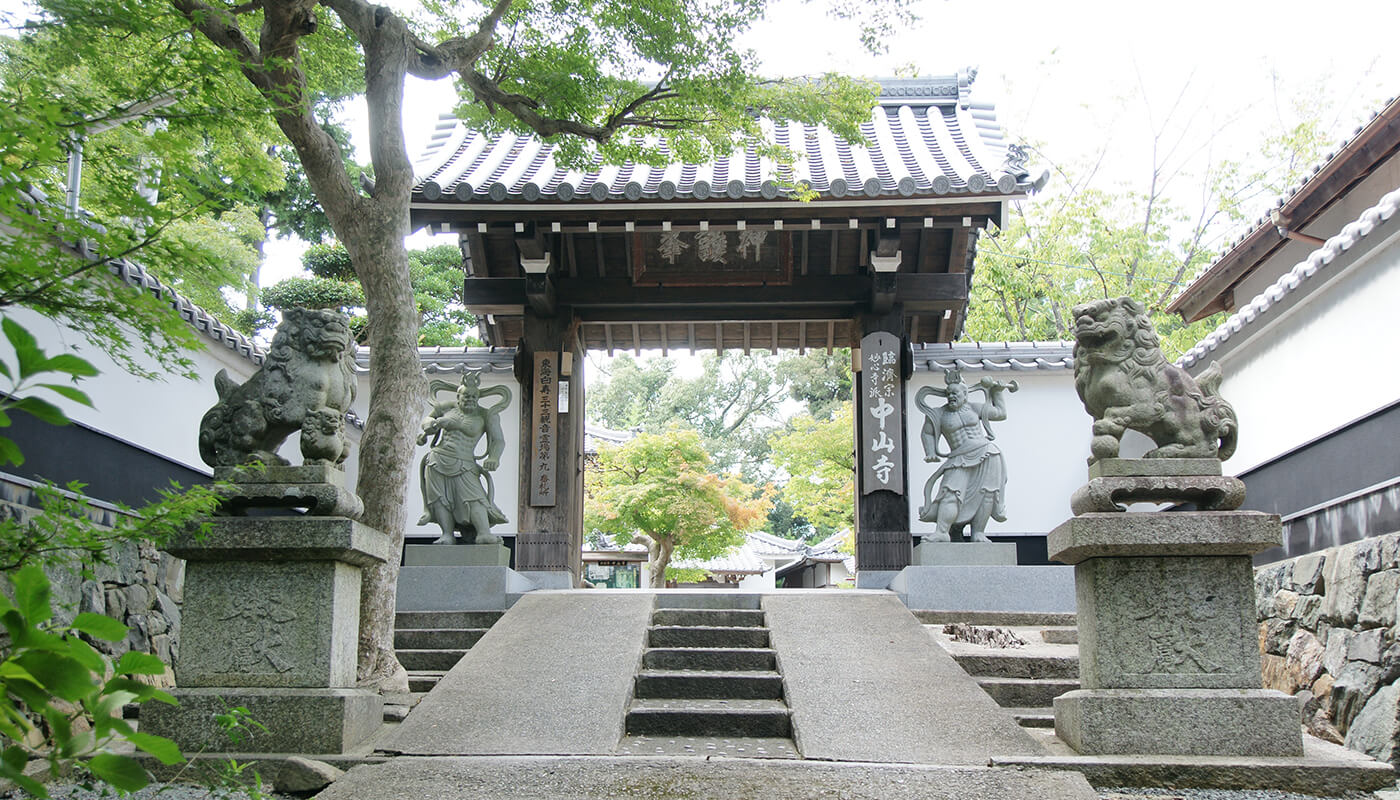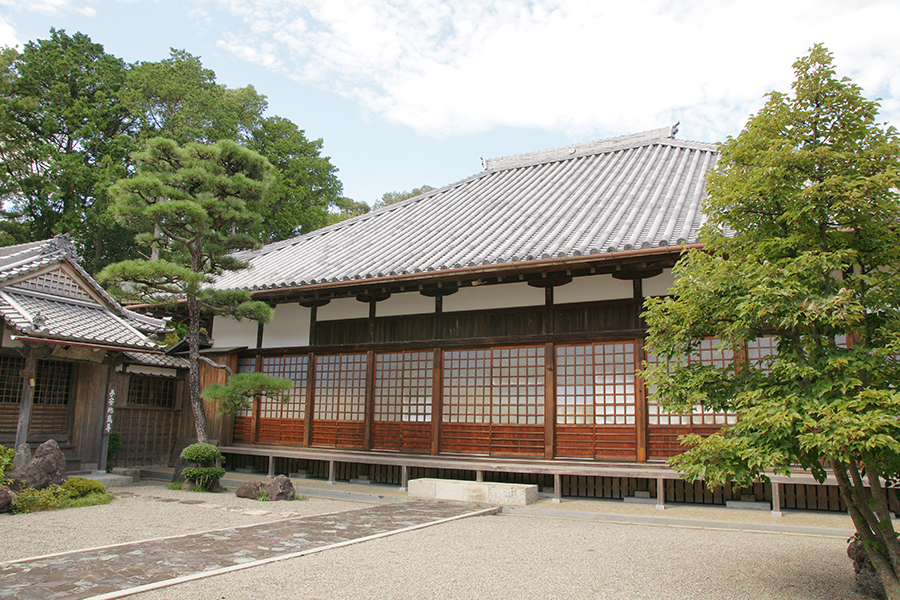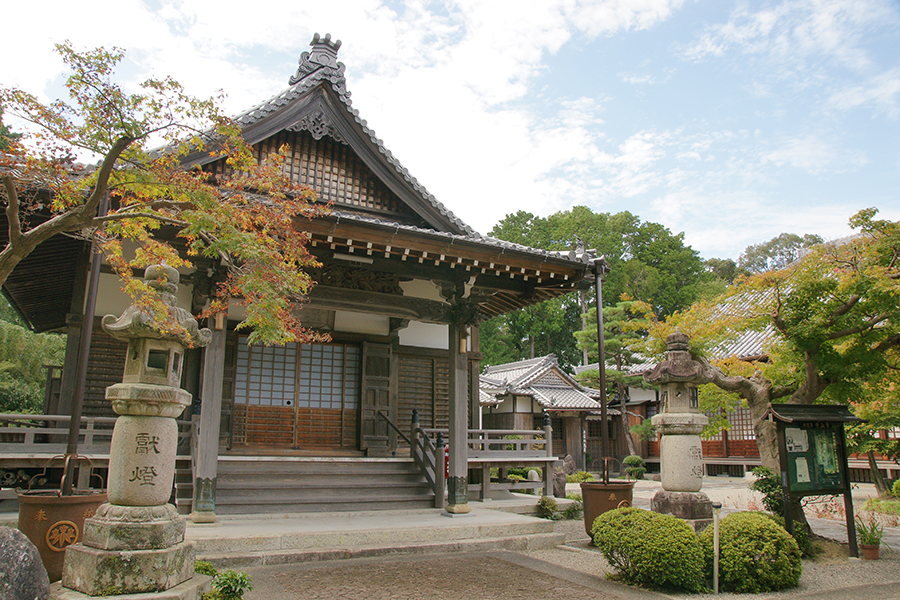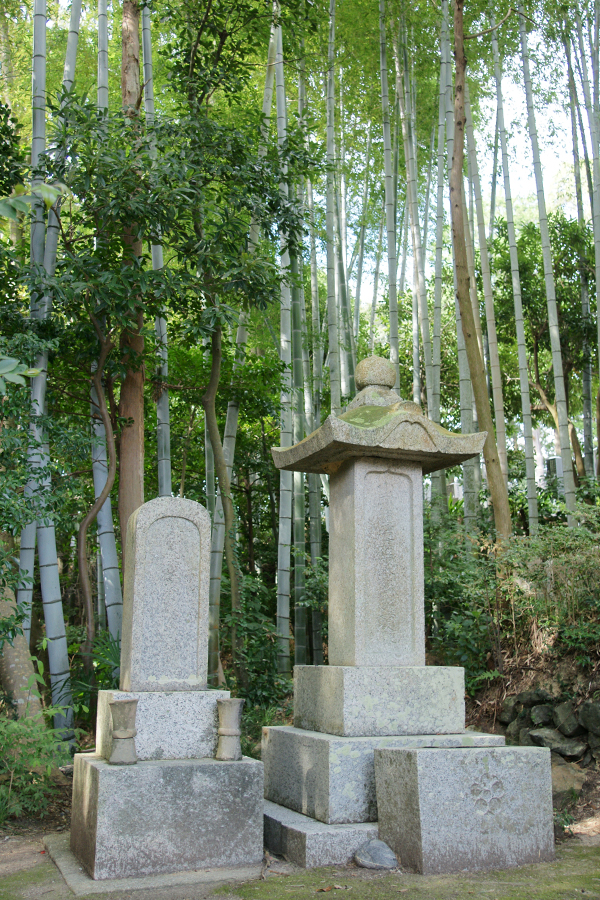Number 5Chūzan-ji temple
History of the temple
Chūzan-ji was founded in 1651 by Gudō Tōshoku (also called Daien Hōkan Kokushi, 1579-1661), a 137th head monk of Kyoto’s Myōshin-ji temple. It was built according to the wish of Ishikawa Masakatsu – a Lord of Kameyama province, who was converted to Rinzai Zen Buddhism by Gudō himself. The temple construction was sponsored by Ishikawa Shōji – protector of the Ōsumi province and official commissioner (bugyō) of Ise region at the time. Chūzan-ji was built at the land in between two sanctuaries – Naikū (inner) and Gekū (outer) of Ise Shrine. It is the oldest and most famous Rinzai sect’s temple in the region.
According to the temple’s records, the Main Hall was built in the 3rd month of 1656. It is 26.22m (86ft) wide and 14.3m (46ft10in) long building which has a hipped roof covered in tiles. This Main Hall is one of the best surviving examples of Rinzai sect’s traditional large scale architecture and one of few remaining in the region in such a good condition. Among the statues enshrined in the hall, the wooden ones on the side altar: statue of the temple’s founder – Gudō Tōshoku, statue of the temple’s 2nd abbot – Settan Hōgyoku and 4 statues carved by Enkū (1632-1695, a monk and a sculptor) are especially worth mentioning.
After entering Chūzan-ji temple’s ground through the Main Gate, stands a hall which enshrines Kendatsuba – a Buddhist god (Gandharva), one of eight legions (hachibushu) accompanying Buddha Shakyamuni. For more than 300 years, a festival during which young parents pray to this Kendatsuba for help with their infant’s nervousness, sleeping problems and night crying is held on the 15th of each month.
Between the Main Hall and Kendatsuba Hall stands a Kannon Hall and Jizō Hall (Hall of Jizō, Bodhisattva who looks over children, travelers and the underworld).
The statue of Eleven-Faced Kannon enshrined in one of them came to Chūzan-ji from another temple named Rendai-ji. Rendai-ji belonged to Tendai sect and hold number 5 on Ise Kannon pilgrimage route. It disappeared in the middle of 19th Century (Meiji period), during times which were very difficult times for Buddhism in Japan. Chūzan-ji temple by welcoming and taking care of the Eleven-Faced Kannon statue from Rendai-ji, also inherited its pilgrimage site number.
The tombstones of official commissioners (bugyō) of Ise region: lord Saegusa (deceased 1841) protector of Iyo province and lord Koide (deceased 1848) protector of Buzen province stand on Chūzan-ji grounds. There is also a monument engraved with poetry of Tokuda Chindō (1758-1825) – a local haiku poet.
Since summer of 2005 a replica of a Dragon and Clouds painting by Soga Shōhaku (1730-1781, Edo painter) is on display on the fusuma sliding doors in the Main Hall. The original painting is stored in Boston Museum of Fine Arts. It used to be a possession of Chūzan-ji, but it was sold in 19th Century. After more than 100 years the replica was put where the original used to stand.
Chūzan-ji is also a temple number 9 of Tōkai area 33 sites Kannon pilgrimage for Seniors (Tōkai Hakuju Kannon 33 kasho meguri).
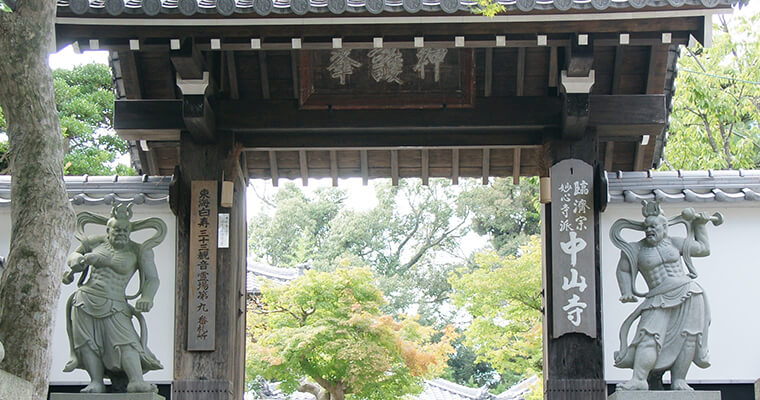
Outline
-
Honorific name
Shingohō
-
Temple's name
Chūzan-ji
-
Sect
Rinzai Myōshin-ji branch
-
Religious service
Jūichimen Kannon
(Eleven-Faced Kannon)
